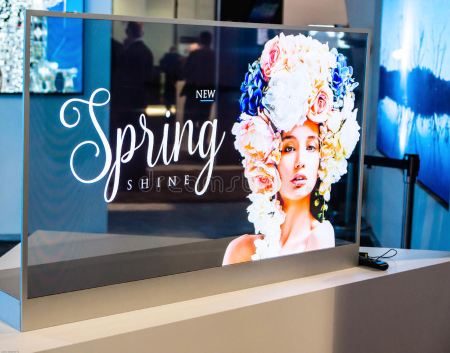AirDroid Business
- Turn your Android devices into digital signage kiosks.
- Lockdown your devices into single/multi-app mode.
- Customize the interface and use limitations of your kiosk.
- Remote troubleshooting of your kiosk.
MDM
● All-in-one Android MDM Solution;
● Remotely Access and Control Android Devices;
● Kiosk Mode for Dynamic Business Needs;
● Monitoring, Alerts, and Automated Workflows;
● Device Location Tracking & Geofence Alerts.
Learn More Try It FreeFirst impressions matter. This saying applies to meeting people for the first time and encountering new brands. Most consumers will first interact with a brand at one of its retail shops in a mall or shopping center when strolling by.
Given this fact, brands need to design retail shop signage that attracts them to drop in for a visit. Brands, in short, need to dress to impress.
Unfortunately, most brands fail in this regard. While these organizations may have digitally transformed other business areas, they may cling to the status quo regarding their retail shop signage.
When a person walks through any retail environment, a million things compete for attention. There will be advertisements displayed across walkways. There will be other storefronts, and many of these will be directly competitive with one another since similar businesses tend to cluster.
The person may even have a phone ringing with push notifications from location-based advertising.

In short, a person’s attention is divided by many curiosities. Retail shop signage that is entirely static will not stand out.
No matter the industry, many brands still have this kind of display. A clothing store will adorn the latest fashion line on a gathering of mannequins.
A bookstore will display a selection of the current bestsellers. A furniture store will display a portion of a room. The store’s brand name will complement these in dull lettering, paper-based advertisements, and signs that do not pop.
Apart from failing to bring in foot traffic, this kind of retail shop signage is hard to change.
Take the example of the furniture store. To update their display, they will have to remove their current configuration of furniture and restage it with the next set. A change in the corresponding retail shop signage must accompany this.
The store designers may need to design new advertisements, pricing information, and other product information, print this out, and set it up on the storefront. Then this process must begin anew with each update of the storefront.
In short, this kind of retail shop signage is operationally intensive. A brand’s workers will lose significant person-hours setting them up, expend the effort that could be spent on other higher-value aspects of the retail environment, and tie up the brand’s resources.
Retail shop signages are a commonplace of embarrassing errors. For instance, some letters may lose luminance, causing the remaining to spell a humorous or offensive word.
These incidents are so common that they are frequently compiled into listicles of the worst examples and lambasted on shows like The Simpsons.

While these incidents may be funny to third parties, they cause reputational damage to the brand.
Instead of inviting customers into the store, the retail shop signage will be lampooned online by people photographing the blunder and sharing it on social media.
Although the retail shop signage is the error, people will inevitably associate the brand with the same image: They may start to view the organization as careless and thus not worthy of patronizing. The issue with a few seemingly harmless letters may cause untold reputational damage.
Brands need to reimagine how they execute their retail shop signage and storefronts. The simplest way is through a two-fold solution that pairs digital displays with a powerful MDM like AirDroid Business.
Both of these elements are equally essential. Digital displays will be more eye-catching on their own, but they will be hard to change through means like a USB equipped with various files.
To unlock the full agility of digital displays, an MDM is needed, and it will bring three key benefits to a brand.
Traditional signage is so unappealing because it cannot keep up with trends. A clothing store displaying its latest seasonal line will have the same retail shop signage and storefront for this week, the next, and the week after. A person who passes by the same store regularly sees nothing new to invite them in.
In contrast, a clothing shop equipped with digital displays and an MDM can be more agile and creative in its promotions.
If a celebrity wears one of their dresses, the brand can show the video and end with an invitation to dress like her. If a styling challenge goes viral on social media, the brand can show a photo montage of how it can be conquered with its clothing. The brand can operate as nimble as they do on social media.

This agility is made possible through the back end of the digital displays. An MDM like AirDroid Business will enable brands to group devices into different categories.
For instance, a brand may want to distinguish all their displays in one geography from another or from their mall stores versus their retail outlets. Upon grouping, the brand can push the segmented content to the different groups, which is done remotely.
The brand will not have to engage any of its on-site retail employees, saving their time and effort. A single centralized marketing team can conceptualize and execute these timely and trendy signages.
Even if your displays are digital, people will make mistakes. A copywriter may misspell a word, which the rest of your brand team may overlook. As a result, a typo may be published.
The error may be difficult to catch if this typo were on a printed sign. It may take some time for people to notice an issue, perhaps only after people lampoon the mistake on social media. Then the brand must correct the error, reprint the sign, and return to the store to set it.

In contrast, an error on a digital display is much easier to correct. In the first place, a brand will be able to remotely monitor all their devices in real-time from a single back-end, such as the one provided by AirDroid Business.
As soon as the error is spotted, the brand representative can fix the mistake and issue the correct version to all affected displays. This change may be so fast that no one in the general public identifies that there is an issue. They simply see the correct version of the display.
This agility protects the brand from any possible reputational damage and displays the correct retail shop signage to passersby: those that will bring them in.
Some brands may want more engagement on top of their retail shop signage. Usually, this comes in the form of employees bearing tablets.
For example, some brands may want employees with tablets to help take down orders from customers, address any initial questions they may have about the product or service, or even offer a personalized shopping experience, such as helping them visualize what furniture will look like in their home.
While these touches strengthen a brand’s engagement, they are also high risk. Employees can shirk from their work by browsing unauthorized websites or using unauthorized apps in their downtime.
Rogue customers may try to install malicious software when the device is in hand. The generic look of the interface may also make all customers think the brand is cutting corners.
An MDM can also help with these tablets. AirDroid Business, for example, has kiosk mode, which allows brands to lock the devices to serve their designated purpose, be it order taking, customer service, experiential shopping, or something else.
This is accomplished by putting the tablet into single-app mode. Brands can likewise prevent access to unauthorized websites by creating an allowlist of acceptable URLs.
Kiosk mode also advances a brand’s identity, enabling them to customize the layout, wallpaper, logo, and other visual elements to their desire.
That way, this touchpoint contributes to the organization’s overall brand identity. Coupled with digital retail shop signage, visitors will see a cutting-edge brand willing to transform itself to best serve its customers.
Most retail shop signages and storefronts are relics of the past. These static displays may have succeeded in attracting foot traffic a generation ago, but they do little to woo customers now. Brands must digitally transform their retail shop signage and storefronts to keep up with the times.
The best way to do so is through digital displays powered by an MDM like AirDroid Business. These digital displays can present key information, such as product details or pricing, and show dynamic, visually arresting content, such as photos, montages, and videos.
With so many more options, the sky is the limit for creative teams: They can use the signage to show off trendy campaigns that promote their brand.
With the feature suite of an MDM, any errors or typos are easily fixable, given that there is real-time remote monitoring of all devices. A brand can bring in even more engagement at the front of its stores through employees equipped with tablets that run on kiosk mode.
Brands, in short, can bring their storefronts into the digital age with an MDM and, in so doing, win over the hearts of digitally-savvy consumers.

Leave a Reply.